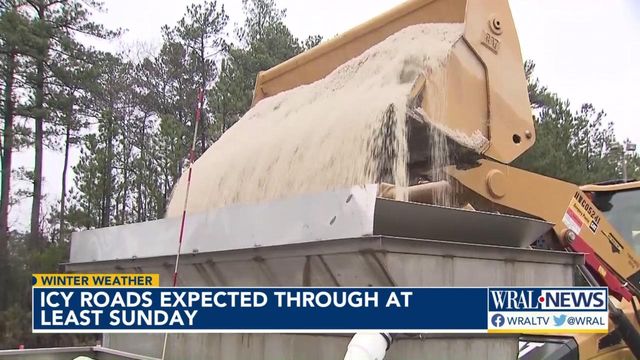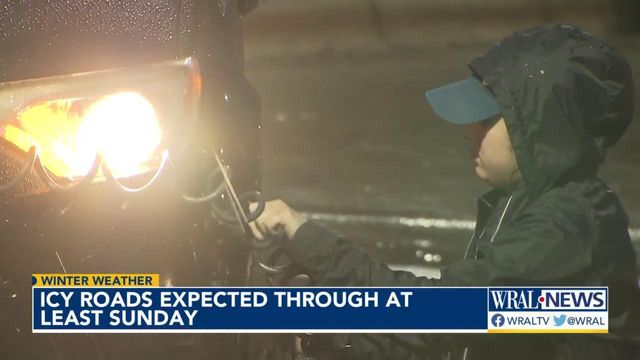Which roads are cleared first after a winter storm?
Have you ever wondered which roads are cleared first after a winter storm, and why?
Posted — UpdatedAccording to the state Department of Transportation, priority is based on:
- Connectivity
- Traffic volume
- Trucking routes
- Importance to hospitals and emergency routes.
Neighborhoods and unpaved roads are normally last to get cleared, and crews will not clear sidewalks or driveways.
The NCDOT's "primary responsibility is to interstates and four-lane divided primary routes essential to the movement of intrastate and regional traffic," according to the website.
Durham's assistant director of public works, Phillip Powell, said bridges routes were pre-treated with salt on Thursday, and primary routes will be treated as needed once there is a transition from rain to snow. In Durham, those routes include major areas like Roxboro Street, Cornwallis Road, Fayetteville Street and N.C. Highway 55.
"Based upon the weather and if it freezes, of course, then we will have black ice, which we will have to go back out to re-address," said Powell.
DOT also brined interstates and freeways in Durham, Wake, Franklin, Person, Granville, Vance and Warren counties on Thursday morning.
"It's really our best shot at protecting the roads. The reality is that it just may not work, and so we need people to be prepared to stay home again this week like they did last weekend," said DOT spokesman Marty Homan.
Secretary of Transportation Eric Boyette said while crews will work quickly to clear roads, the department has also recently felt impacts from the coronavirus pandemic and staffing shortages, so crews might not respond as quickly as they have in the past.
"Be patient and be prepared to hunker down when winter weather hits ... we ask that you be safe and stay home if you can," he said.
You may see highway signs advising drivers that cars left abandoned on the shoulders of roadways and highways will be towed. According to the NCDOT website, North Carolina law gives NCDOT and the N.C. State Highway Patrol authority to legally remove abandoned vehicles.
For the upcoming winter storm, around 30 NCDOT trucks with spreaders are on standby in Raleigh to lay down 4,000 tons of salt ahead of Friday's winter storm.
"We are anti-icing and participating in hazardous conditions, particularly in the Triangle area and everywhere east of I-95 and down to the coast," said Boyette.
The chemicals used to clear snow and ice from the roads depend on each winter storm. For this storm, crews will rely more heavily salt as opposed to brine, the salty solution that leaves white lines on the roads, because rain expected Thursday night could wash the solution away before the snow and ice event begins.
Boyette said though, crews have been able to use brine in some areas, and that if crews can brine they will.
"This storm is changing and we just want to be prepared," he said.
Salt is used after the precipitation to help melt remaining snow and ice, according to officials. Sand is also used after storms to help break up the ice and add extra traction for vehicles.
The storm from last week hit the western portion of the state harder, Boyette said, so crews in the eastern part of the state were able to save salt and sand for this storm.
Officials ask drivers to give trucks space to work if they see them.
• Credits
Copyright 2024 by Capitol Broadcasting Company. All rights reserved. This material may not be published, broadcast, rewritten or redistributed.






